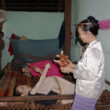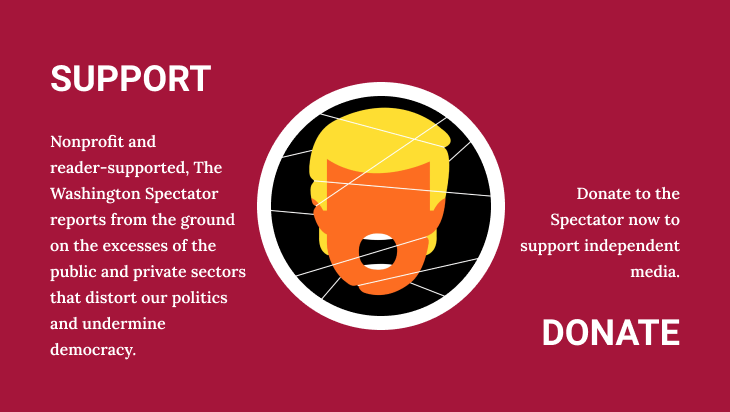Vietnam is a country abuzz with youthful energy. Most of the population have no active memory of the American war, being too young even to remember the great opening to the West in the early 1990s, even though it has reshaped the course of their lives. Yet at the same time, memories of the war are everywhere, enshrined in museums, monuments, and grave sites, from the great marble mausoleum of Ho Chi Minh in the capital, Hanoi, to the ubiquitous Soviet-style statuary of heroic workers, peasants, and soldiers, to the humblest village war cemetery, in which half the tombs of the liet sy, the martyrs, are marked “Chua biet ten”—“Name Unknown.”
The most famous of the museums is in Ho Chi Minh City, the former Saigon. Shortly after the fall of the city on April 30, 1975, Vietnam’s new revolutionary government opened what it called the Exhibition House of American and Puppet War Crimes. It was a house of horrors, aimed at a purely Vietnamese audience. There were no tourists from the West in those days. The iconography was angry, strident, and grieving: B-52s carpet-bombing rice paddies, C-123s spraying the white mist of Agent Orange, bodies incinerated by napalm or strewn by the hundreds in a ditch at My Lai. Yet it was also infused with pride. All this brute technological power had not in the end been a match for Vietnam’s ingenuity and persistence, the willingness to fight for as long as necessary, regardless of the cost, which in the end amounted to three million lives from the American war and its precursor, the anti-colonial struggle against the French.
Over the decades, the name of the museum has changed, as has the nationality of its visitors. Today, it’s the War Remnants Museum, listed by TripAdvisor as the city’s top tourist attraction. Well over a million people flock to it each year, and 90 percent of them are foreigners.
Like everyone else, I made the pilgrimage to the museum on my first trip to Vietnam. The building was packed with Europeans, Americans, and Canadians, a smattering of Australians, smaller numbers of Chinese, Korean, and Japanese. A group of stolid Midwesterners of a certain age were deep in contemplation of a photograph of soldiers from the 1st Air Cavalry waterboarding a Viet Cong prisoner. It was December 2014, and by coincidence, that same week, the Senate Intelligence Committee had released its report on torture in Iraq, singling out the practice as an unprecedented affront to American values.
The much smaller number of Vietnamese visitors were largely milling around in the courtyard outside. There were groups of schoolchildren and Ho Chi Minh Young Pioneers, preschoolers clambering around on captured American artillery pieces, young couples mugging for selfies in front of an abandoned Huey helicopter. What the Pulitzer Prize–winning Vietnamese American author Viet Thanh Nguyen calls “totems of the industrial enemy brought low.”
Leaving the museum, which I’ve returned to many times since that first trip, I fell into conversation with a middle-aged man named Quy, who was selling pirated copies of the Lonely Planet guide and Bao Ninh’s great anti-war novel, The Sorrow of War, and had picked up a few words of English. As a child of 8, he had stepped on an unexploded cluster bomb, a bom bi, in his home village in the Central Highlands, and now he was missing an arm and an eye. But he no longer felt any animosity toward Americans. “The war is over; it was a long time ago,” he said, offering me his stump. “Please shake my hand. We can be friends, yes?”
For more than a decade after the museum opened, relations between the former enemies remained frozen. Vietnam was one of the poorest countries on earth, thanks to a misbegotten series of Soviet-inspired five-year economic plans and a pitiless embargo that cut it off not only from U.S. aid but from access to loans from international financial institutions. But the freeze began to thaw slightly in the late 1980s, when the two countries saw a first glimmer of mutual interest. The United States had long insisted that nothing would change without the “fullest possible accounting” for the 2,600 Americans still missing in action. Though this stuck in the craw of Vietnamese leaders, who had perhaps 300,000 MIAs of their own, they came to understand that there was a benefit in helping the Americans to locate their war dead, and the militaries of the two countries embarked, tentatively at first, on joint search operations.
This called for some small measure of reciprocity, and it came in the form of a modest humanitarian program to provide prosthetics and orthotic devices to people with severe disabilities—even though this was still bitterly opposed by many American veterans. Two people were primarily responsible for this initiative—the former Marine Bobby Muller, himself confined to a wheelchair after a firefight on the edge of the old Demilitarized Zone between South and North Vietnam; and Democratic Senator Patrick Leahy of Vermont. It marked the birth of the Leahy War Victims Fund, and since then, thanks in large measure to Leahy’s longtime aide, Tim Rieser, a master of the arcane workings of the federal budget, the program has expanded to more than 50 countries, with a long tradition—at least until now—of bipartisan support.
Those first small overtures raised an obvious question: beyond the usual birth defects, disease, and accidents that afflict any society, why were so many Vietnamese disabled and disfigured? The answer was clear: the vast amount of unexploded ordnance, or UXO, that still littered the country, killing and maiming hundreds of civilians each year. Centered on the province of Quang Tri, adjacent to the DMZ, the most heavily bombed piece of earth in human history, hundreds of millions of dollars in American aid have since flowed into UXO clearance programs, with comparable amounts going to deal with the consequences of the nine-year bombing campaign along the Ho Chi Minh Trail in neighboring Laos.
If a kid like Quy stepped on an unexploded bom bi or picked up one of the baseball-size munitions, thinking it was a toy, there could be no dispute about the cause of his injuries. By contrast, the hundreds of thousands of birth defects and deformities resulting from exposure to dioxin, the toxic by-product of Agent Orange, presented a much tougher problem. Here, cause and effect was—and still is—impossible to establish in individual cases.
Even American veterans had to fight for more than 15 years before Congress ruled that their postwar health problems were the result of a “presumptive association” with their service in Vietnam. The Vietnamese had to wait more than another decade, the very words “Agent Orange” expunged from diplomatic conversations as a crude Vietnamese attempt to extort reparations. Not until 2006 did the United States agree to deal with the problem, first by funding the cleanup of the worst dioxin “hot spots” at the two air bases, Da Nang (completed in 2018) and later Bien Hoa, which served as the main hubs of the defoliation campaign, Operation Ranch Hand. That left an issue that was even more politically delicate—assuming responsibility for those whose disabilities could be attributed to Agent Orange. But again thanks largely to Rieser and Leahy, the latter of whom retired from the Senate in 2023, more than $100 million has now gone to aid for the disabled in provinces that were most heavily sprayed or otherwise contaminated by dioxin.
These cumulative efforts to address the legacies of the war created a deepening mutual trust that led eventually, in 2023, to the signing of a “comprehensive strategic partnership” that embraces cooperation on trade, international security, climate change, and support for public health, education, and economic development. It’s the paradigm of a “win-win” arrangement, the antithesis of the crude “I win, you lose” transactionalism of international relations in the second Trump administration, starting with the decimation of the U.S. Agency for International Development and aggravated by the plan to impose a punitive 46 percent tariff on Vietnamese imports, prompting the hasty arrival of a Vietnamese delegation in Washington to—in Trump’s gloating response to foreign supplicants—“kiss my ass.”
Almost all of USAID’s work in Vietnam has now been terminated: notably, anything to do with public health, the environment, or climate change. After several weeks in limbo, the disability grants have survived Elon Musk’s chain saw, at least for now. Even Pete Hegseth’s Pentagon seems to grasp that there is strategic value in completing the cleanup of the Bien Hoa air base, which is part of Vietnam’s defensive line against aggressive moves by China in the South China Sea.
In Washington, the main hub of support for work on war legacies has been the United States Institute of Peace, or USIP, founded in 1984 by veterans of World War II, Korea, and Vietnam. But despite its long bipartisan history and its legal status as an independent, nongovernmental institution, it has been an egregious victim of Musk’s so-called Department of Government Efficiency, its offices physically occupied, its board and staff fired, its president, George Moose, a vastly experienced career diplomat, replaced by a twentysomething DOGE tech geek with no background in government or international relations.
For the past three years, USIP had been working with USAID on a number of new projects, none of them expensive but all critical in moving the process of reconciliation with Vietnam to the next level. They include a collaborative effort by veterans from both countries to locate and identify, through state-of-the-art DNA analysis, the remains of Vietnamese soldiers still missing in action; the preservation of the long-neglected Bien Hoa-Binh An cemetery, to honor the sacrifice of soldiers from the Army of the Republic of Vietnam, a small step toward healing Vietnam’s bitter internal divisions, which has proved much harder than building a new relationship with the United States; and a new permanent exhibit at the War Remnants Museum, showcasing for both foreign visitors and younger generations of Vietnamese how the two governments have worked together to deal with the legacies of the war.
When I met with USAID officials in Vietnam a year ago, they were optimistic that the exhibit would be finished in time for the fiftieth anniversary of the fall of Saigon. The museum’s director, Dr. Tran Xuan Thao, who was shortly to retire, was more cautious: the wheels of bureaucracy turned slowly, and the project needed approval by the Ho Chi Minh City People’s Committee; the Ministry of Culture, Sports, and Tourism; and Office 701, the section of the People’s Army of Vietnam responsible for war legacies. So perhaps it would be sometime later in the year, to coincide with the fiftieth anniversary of the museum’s opening.
No one knows now when, if ever, that will happen, for the funding has been frozen. A Vietnamese friend who visited this month told me that a section of the museum was screened off for construction, with muffled sounds of drilling and banging, but this seems to have been no more than routine maintenance work. Museum staff told him they were in the dark about what was happening. As are many of us, wondering whether, as Andrew Wells-Dang, USIP’s senior director for Vietnam, puts it, we now stand at another of those inflection points in history, like 1975, which will redefine—and this time not for the better—the long and tortured relationship between former enemies.
George Black is the author of The Long Reckoning: A Story of War, Peace, and Redemption in Vietnam (Knopf, 2023)



0 Comments